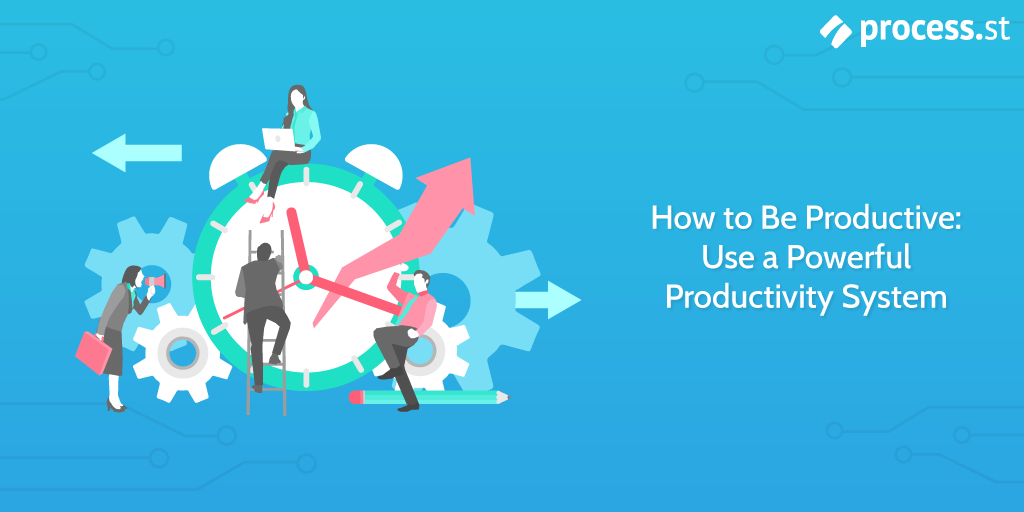
This post is a collaboration between our Process Street Team and Corey Fradin, Founder of QuickBooost. Exploring topics like productivity, time management, and goal setting, QuickBooost helps you better utilize and take control of your time.
The pursuit of productivity is often simplified to a hero’s fable involving the conquest of willpower; the reality might be more about the systems we build around our work, and the clever things we do to make work easier.
You only have 24 hours in a day. You can reduce the problem of productivity to: How many tasks can I get done in that 24 hour period?
What you choose to do with your time – which tasks you prioritize, which you choose to delegate, which you choose to automate, all of these factors are directly the result of the productivity system you build around your work.
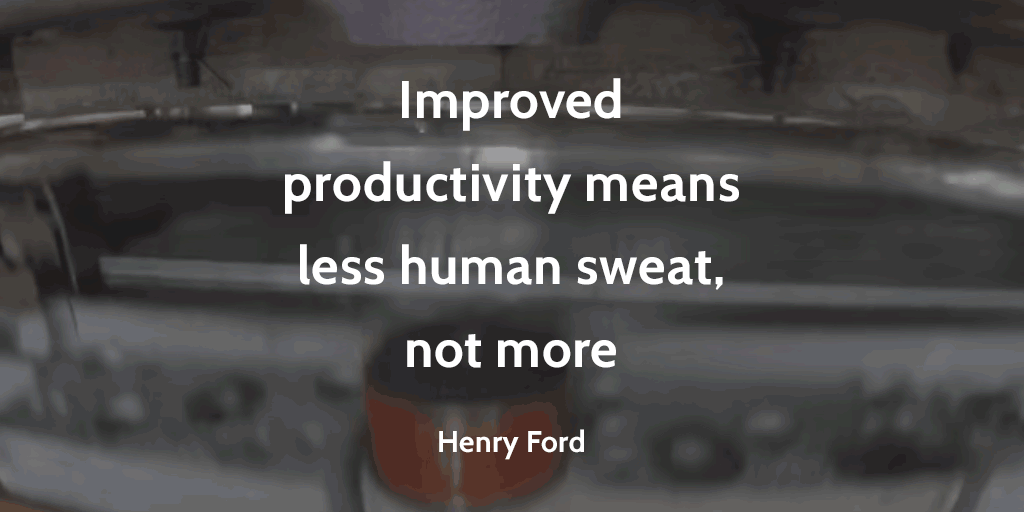
You already have a productivity system, you just might not realize. Even if you don’t feel productive, you can still look at what you’re currently doing and understand it in terms of some kind of system.
What that means is, you can break the situation into parts, like your goals, objectives, strategies, and tactics; how all of these things work together amounts to your productivity system.
Take for example David Allen’s Getting Things Done methodology. The GTD method is basically the idea of achieving mental focus by writing down your main tasks, and figuring out how you can break them down into smaller, more immediately actionable tasks.
This is a type of productivity system.
So, in this article, we’ll be looking at:
- What a productivity system actually is
- Why productivity systems are important
- How to build a simple productivity system
- Best practice tips on how to be productive
- Continuously improving your productivity system
- Extra productivity resources
In essence a productivity system is a lot like a straightforward process that helps you break down your workload into smaller, more manageable chunks, and ultimately do more work, more efficiently.
What is a productivity system?
A productivity system is simply the way that you manage your time each day. It’s the process you use to be productive and to get things done.
The better the system, the more you’ll be able to stay productive, and the more you’ll accomplish.
So in this case, see the official productivity system definition as: the strategies, methods, and tactics that you use to make progress in your work.
With that in mind, there are two things I want to point out.
First, work means anything that you are striving towards. That could be a weight loss goal, a higher GPA, or that report you’ve been tackling. Work is the thing that you are giving your attention and time to.
Second, there are a lot of techniques for achieving better productivity and each one is more promising than the last. Methods like:
- Process mapping
- Implementing productivity software
- Or making a to-do list
How are you supposed to decide which to add to your system and which to ignore? Well, I’ll touch on that in more detail later on, but an easy answer for now is to implement the ones that work for you.
Everyone is different. The system that you create will look different compared to the person sitting next to you. That’s fine and to be completely expected.
Your system, like you, is unique and will be tailored to the tasks and goals that you are looking to accomplish. The methods you choose to adopt, then, should be ones that help you move forward.
Why should I care about a productivity system?
You now know what a productivity system is, but why is it important? Why do you need a productivity system?
It all comes down to your time.
With only 24 hours each day, how you choose to spend those hours will have a direct impact on what you can achieve. If you spend them wisely, you’ll see yourself moving faster and making more progress than ever before.
But wastefully?
Well, you’ll likely move in small, frustrated circles. Not really making any progress and not really going anywhere.
You don’t want that. You want results!
That’s why a productive system is so important. Because by having one, you’ll have a routine for getting real, meaningful work done each day. In other words, with an effective system you’ll have the process and confidence to know that the work you’re putting in each day is leading you in the right direction.
So when it comes to improving your productivity, understand that creating a productivity system for yourself is one of the best things that you can do.
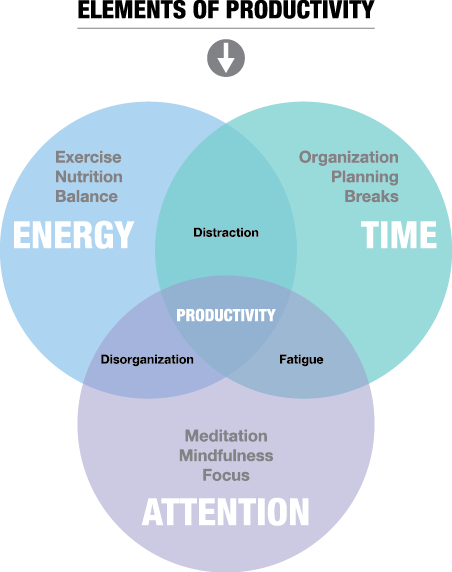
How to build a productivity system
It’s time to create your productivity system. Each of the following steps will break down a different part of the process.
Go through each step slowly and take the time to build something that works for you. After all, if you spend a little extra time upfront creating something of value, you’ll save yourself that much more time on the backend.
Let’s dive in.
1. Know what you want
The first step in creating your productivity system is to know what you want. It’s taking a look at the big picture to understand where you are heading and why you want to go there.
It’s also correcting course if you find that you are heading in a direction that you don’t want to go.
Put another way, this first step has to do with goal setting.
Now, if you’re new to setting goals for yourself, the key to doing it effectively is to look at the macro. Zoom out from your daily grind and take a good look at who you are and where you want to go.
Then with that in mind, you can start setting some objectives and checkpoints to guide you towards a better future.
Something to keep in mind – Harvard Business Review suggests that while setting challenging goals may seem more daunting, reaching them leaves you that much more satisfied compared to taking the easy route.
So aim high and set some goals that are going to challenge and push you to greater limits.
2. Create a plan
With your goals in mind, the next step to creating your productivity system has to do with your tasks. Because what you choose to spend your time on matters.
Imagine this scenario – you are the most productive you’ve ever been. You spend your days flying through tasks. Getting more work done with better effectiveness and determination than ever before.
But, you’re not seeing any progress. You’re still in the same spot that you were before becoming more productive.
What’s going on? It all comes back to your tasks.
The tasks you work on, similarly to how you choose to spend your time, dictates the direction your life takes.
For example, if you spend nine hours each day doing laundry, you may feel really productive and happy with the work you did, but you won’t be any closer to achieving your goal of running your own business. Or if you spend all-day working out, you won’t be any closer to your goal of learning to surf.
See what I’m getting at?
The tasks you work on directly impact the progress you make.
So for this step:
- Consider the tasks that you perform each day
- Prioritize your tasks so that you work on ones that will help you achieve your goals before working on anything else
- Once you complete your important tasks, then begin to focus on lower-level tasks
Create a plan for your time that helps you do more of what matters while ignoring everything else.
3. Implement tactics
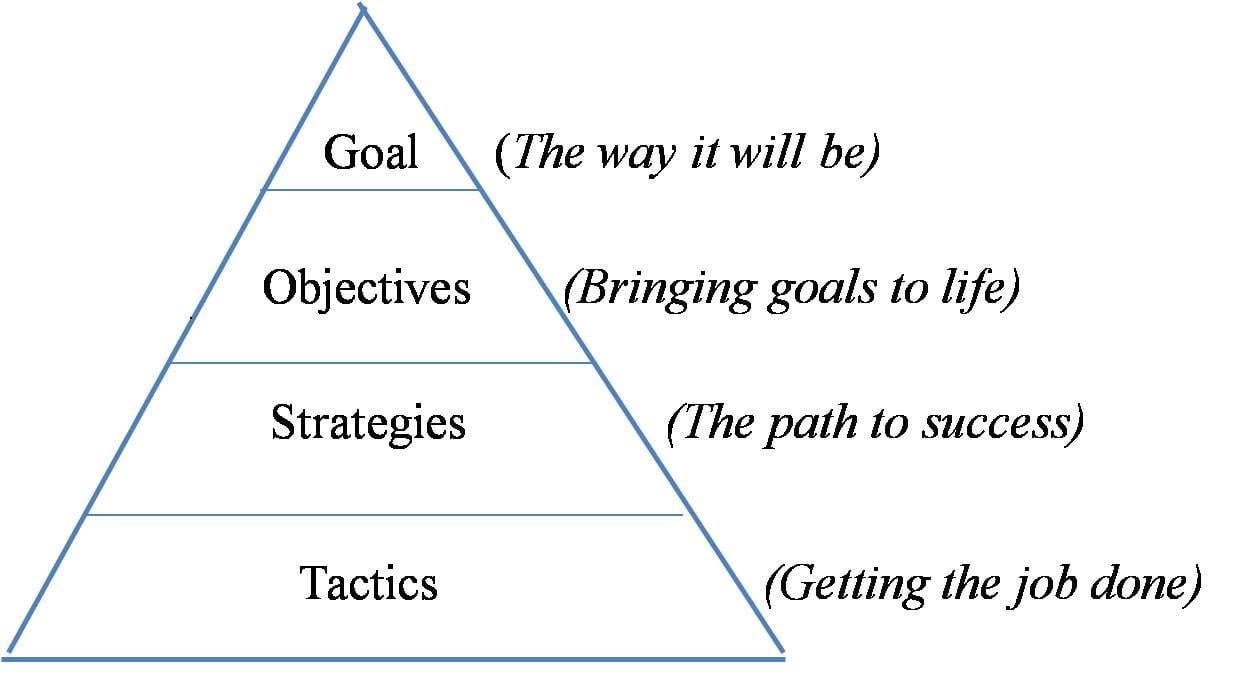
GOST: Goals, Objectives, Strategies, Tactics. This hierarchy is about breaking down your main business goals into smaller, actionable tasks, or tactics.
So, you have your goals and you know what tasks need to be worked on. You now have the skeleton of your system set up.
Great!
What’s next? Implementing tactics that will allow you to be that much more productive. Because with your goals and objectives in place, you’re ensuring that each day you will work on things that actually matter and will help you move forward.
You’re now at the point where you can start implementing new ways to enhance your productivity and start moving even faster in the right direction.
For this step, it’s all about trying new things. Testing and experimenting with different tactics to find what works best for you.
I already touched on a few methods earlier on in this post that you should consider. Here are some that Inc recommends:
- Blocking sites that you find distracting
- Embracing automation to reduce the time you spend on repetitive tasks
- Unsubscribing from emails that don’t provide you with value
There are a lot of different tools, techniques, and tactics that you can apply to your productivity system. It can feel overwhelming at times, but try not to overthink it.
Instead, test a couple out. Try one or two within your productivity system and see how they work. If you find that you are more productive and able to make substantial or meaningful progress, keep it.
If you find that either nothing happens or you are less productive using the tactics, scrap them and try something else.
See this step in two parts. Part one is implementing new tactics into your system. Part two is testing them out and keeping the methods that help you do more of what matters.
4. Iterate everything

The final step in creating your productivity system is the simplest to explain, but the most time-consuming to do.
Iterate.
Yes, along the way you’ll want to continuously revamp and revise your productivity system. As you progress and grow, you’ll learn of new or better ways to do things. And when you do, it’s your responsibility to update your productivity system so that it is constantly building on top of itself.
The more you iterate, the better your system, the more productive you’ll be, the sooner you’ll reach your goals.
It’s all connected.
To give you an example, I’ve always planned out my day. I’ve always had the need for it and the desire to organize my schedule – even as a kid.
But do you think I use the same system for planning as I did all those years ago? No way!
I went from planning with Post-It Notes (which I would have to throw away and rewrite every time a plan moved around), to Excel (which was clunky and slow), to Google Docs today (my new favorite).
My systems have and will continue to grow with me and so should yours.
Best practice tips for how to be productive
With your productivity system now in place, congratulations! You are well on your way to achieving something amazing. That said, there are a few things that you’ll want to keep in mind.
Some points that will keep you on the right track as you experiment with your productivity system.
Keep it simple
The best systems are simple ones. Make your system as simple and straightforward as possible.
Do your best not to overcomplicate or over-plan. The more detailed the system, the more time you’ll need to spend fixing different areas that break. If you feel more comfortable starting with a template, you can start off with a work schedule software like TimeCamp.
The simpler the system, the more time you’ll have to actually get work done.
Now, there’s certainly a time and place for a more complicated, thorough system. Just like how there is a time and place for both productivity and efficiency. But when it comes to version one of your productivity system, keep it:
- Light
- Easy to use
- Simple!
That way you can focus on what actually matters.
Use a prioritization matrix
Using a simple business process analysis tool like a prioritization matrix can help you figure out what to prioritize.
You can apply a prioritization matrix to anything, from simple tasks to complicated projects. Anyone can use them, from a single person to a large enterprise team.
A simple prioritization matrix looks like this:
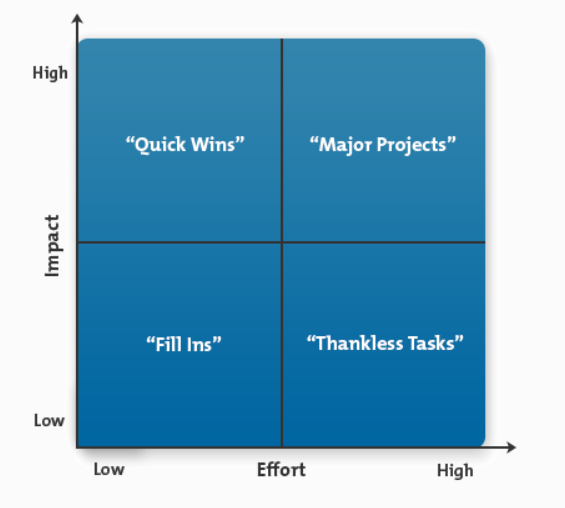
Here you have a 2×2 grid with cost plotted against value. The principle is straightforward. You make a list of your tasks, and then categorize them based on these simple categories.
This is a simple version; more complicated prioritization matrices do exist and the topic runs quite deep. I’d recommend you read our prioritization matrix article for a more in-depth look at the topic.
But, if you want to try out a quick and simple prioritization matrix for yourself, you can just use this template:
Be patient
Something else to keep in mind with your system is to be patient. I know you want to see results and achieve your goals right now, but things don’t always move as quickly as we’d like.
The same thing goes for your system.
While you’ll surely want to be that much more productive today, it may take a few rounds of iteration to create the best program for yourself. Be patient and know that when it comes to your personal productivity, it will take some time to find the right mix.
If you’re truly concerned about the time it will take to hone your system, be aware of these productivity killers that may slow you down.
Trial and error
If it’s not already completely obvious, the last thing that you need to keep in mind is that this process is all about trial and error.
It’s about finding what works for you and tossing what doesn’t.
When you encounter setbacks or roadblocks, see each of them as learning lessons. Gain something from each “failure” and take a page from Entreprenuer.com when they note that the failures you encounter will only help you grow and (inevitably) succeed.
So try something out, keep it if it works, discard it if it doesn’t.
Continuously improving your productivity system
Your personal productivity is ever-changing, just like the landscape of your work. And what allows you to focus and make progress today may not work for you tomorrow.
And that’s fine.
Things change and you’ll need to roll with the punches when it happens.
When you do need to make a change, revisit this post. Refresh yourself with the steps needed to create your productivity system. Retrace your steps and create a version that works for you once again.
The concept of how to be productive is constantly transforming and shifting. Keep things simple and treat it like a game that you are consistently playing (and winning!).
Here are some approaches you can take to continuously improve your productivity system.
1. Use BPM software
If you’re not using BPM software, you’re missing a huge opportunity to improve your productivity.
Some of the benefits of using a BPM software include:
- The ability to quickly and easily edit all of your processes
- A centralized view of all activity in real-time
- Automation of repetitive tasks
- Limiting or greatly reducing human error
- A channel for asynchronous, cross-team collaboration
The BPM market is predicted to be worth around $14 billion by 2021, which is almost double the 2016 valuation of $6.96 billion. These figures paint a clear picture of the long-standing value of BPM software in years to come.
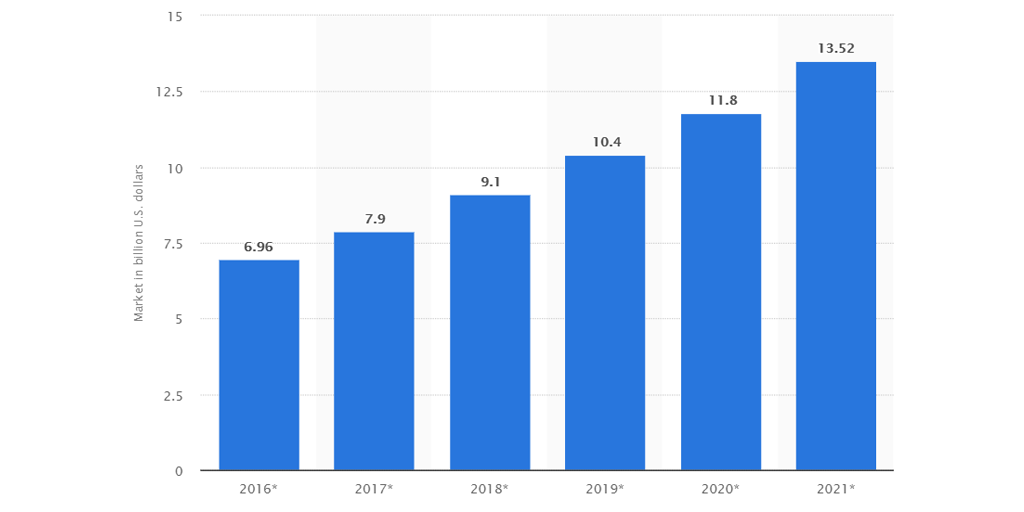
When you have a tool like Process Street, you can create actionable checklists that work seamlessly with your existing tools and systems using the thousands of integrations available.
It can be hard to decide which is the best BPM software for your business, but a great way to figure it out is to get started yourself with some of the free, pre-made, fully customizable templates on offer with Process Street.
2. Automate your processes!
If productivity is defined by the amount of work you can output based on your input, the importance of automation for productivity should be a no-brainer.
By automating tedious manual tasks, you are minimizing waste and reducing the amount of resources needed to complete equal or greater amounts of work.
Stuck on how to get started with automation? Have a look at our Ultimate Guide to Business Process Automation for everything you need to know about applying automation to every process in your business today!
After you’ve had a read of that, you can also check out some of these 50 workflow automation ideas for more inspiration.
3. Keep it simple

Processes should be simple. As simple as you can make them.
An unnecessarily complex process introduces room for human error. If you want your team, especially new hires, to follow a process correctly, you need to spell things out in clear terms, with zero ambiguity.
Some processes are unavoidably complex, but there are always ways to simplify things. For example, a process with many different branching paths might use conditional logic to show or hide certain tasks, based on a specific situation.
Check out this article on creating better looking, more simplified process maps for ideas on how to improve readability and avoid confusing information.
“One should be willing to start from scratch and redraw the whole process map in order to make it easier to serve its purpose.” – Hussain Thameezdeen Abubakker, iSixSigma
4. Align your processes with your main business goals
At the end of the day, the way you quantify your productivity will always tie in with your main business goals.
There are two main benefits of prioritizing thinking about how your processes map onto your main business goals:
- You can clearly and easily communicate to anyone involved with the process the importance and value of that process, and exactly how it will make an impact on business performance.
- By clearly underlining the link between business goals and processes, managers will be more clearly oriented and better motivated to enforce specific goals by focusing on the processes and areas for improvement that matter.
These statements speak to a sense of process ownership, and how an understanding of what a process is supposed to achieve can help employees take the process more seriously.
Therefore, if a process isn’t performing as it should, process owners can identify problems and improve things accordingly.
Without a clear set of business goals to orient your processes, workflows become stagnant and improvements won’t happen.
5. The process for optimizing a process
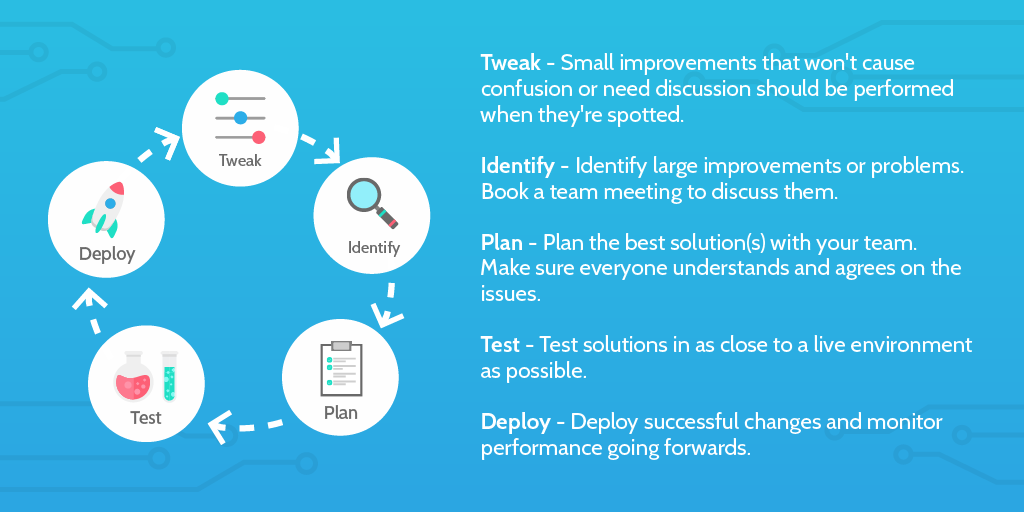
This is closely related to the previous point about how important it is to orient your processes with clear goals.
The key is understanding the process for optimizing a process as quite literally that – a process, or sequence of clearly defined tasks. For example, the diagram above illustrates a simple process for continuously improving a process
So how do you encourage process improvements and help to build a culture of continuous improvement in your workplace?
A few approaches include:
- Identifying process improvement champions to spread enthusiasm, foster interest and encourage a sense of process ownership between other employees.
- Involve employees in as wide a capacity as possible with process improvement communications. As well as sending emails, consider internal newsletters, posters and bulletin boards, slack announcements, and regular stand-up meetings to disseminate and incorporate information to and from all horizontals of your workforce.
The principles of continuous improvement are highlighted in this checklist for the process for optimizing a process, embedded below.
Bonus productivity resources
From here, there are plenty of other productivity-related resources for you to check out:
- 6 Tasks We Automate to Make More Time for Work That Matters
- 8 Ways to Improve Sales Productivity with Consistent, Repeatable Processes
- Task Planning: Getting Tasks Out of Your Head & Into Your Notebook
- 42 Productivity Hacks to Work Harder, Better, Faster, Stronger
- Prioritization Matrix 101: What, How & Why? (Free Template)
Take a look at a post or two and push yourself to learn and grow even further. Incorporate the lessons into your productivity system and watch how you are able to make that much more progress each day.
Hopefully you found this article practically useful! To help us continuously improve the resources we offer you on our blog, leave a comment letting us know some of the ways you stay productive in the workplace. What does your productivity system look like?







 Workflows
Workflows Forms
Forms Data Sets
Data Sets Pages
Pages Process AI
Process AI Automations
Automations Analytics
Analytics Apps
Apps Integrations
Integrations
 Property management
Property management
 Customer management
Customer management
 Human resources
Human resources
 Information technology
Information technology



Oliver Peterson
Oliver Peterson is a content writer for Process Street with an interest in systems and processes, attempting to use them as tools for taking apart problems and gaining insight into building robust, lasting solutions.